I. Executive Summary:
Our proposed solution aims to provide a robust and precise indoor asset tracking system using a combination of BLE beacons, BLE + LoRa trackers, and LoRaWAN gateway.We also recommend to use active & passive RFID tags for stationary assets. Leveraging advanced techniques such as trilateration and triangulation with BLE beacons, we ensure accurate real-time tracking of thousands of assets within indoor environments.
II. System Architecture:
Application:
Our advanced system provides accurate and real-time location data for critical medical assets and devices, empowering staff with pinpoint precision, patients, fleet (Ambulances, vehicles, moving equipments like stretchers, etc.). Our solution provides a simple cost effective asset tracking system that is reliable and has been proven to work in every environment.
- Asset tracking in Hospitals:

. - Moving & Stationary Asset tracking in Door locations:
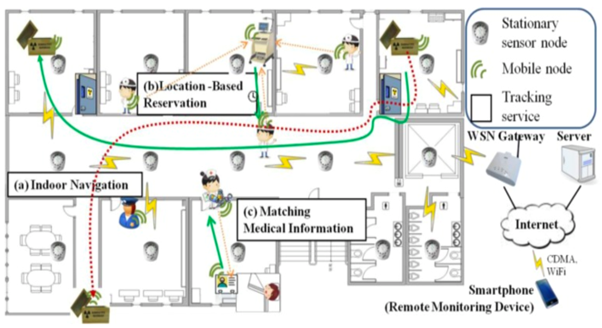
. - Asset tracking in manufacturing facilities:
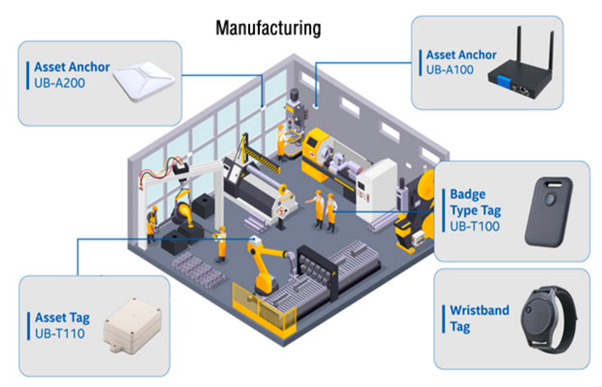
- End to End Asset tracking Architecture:
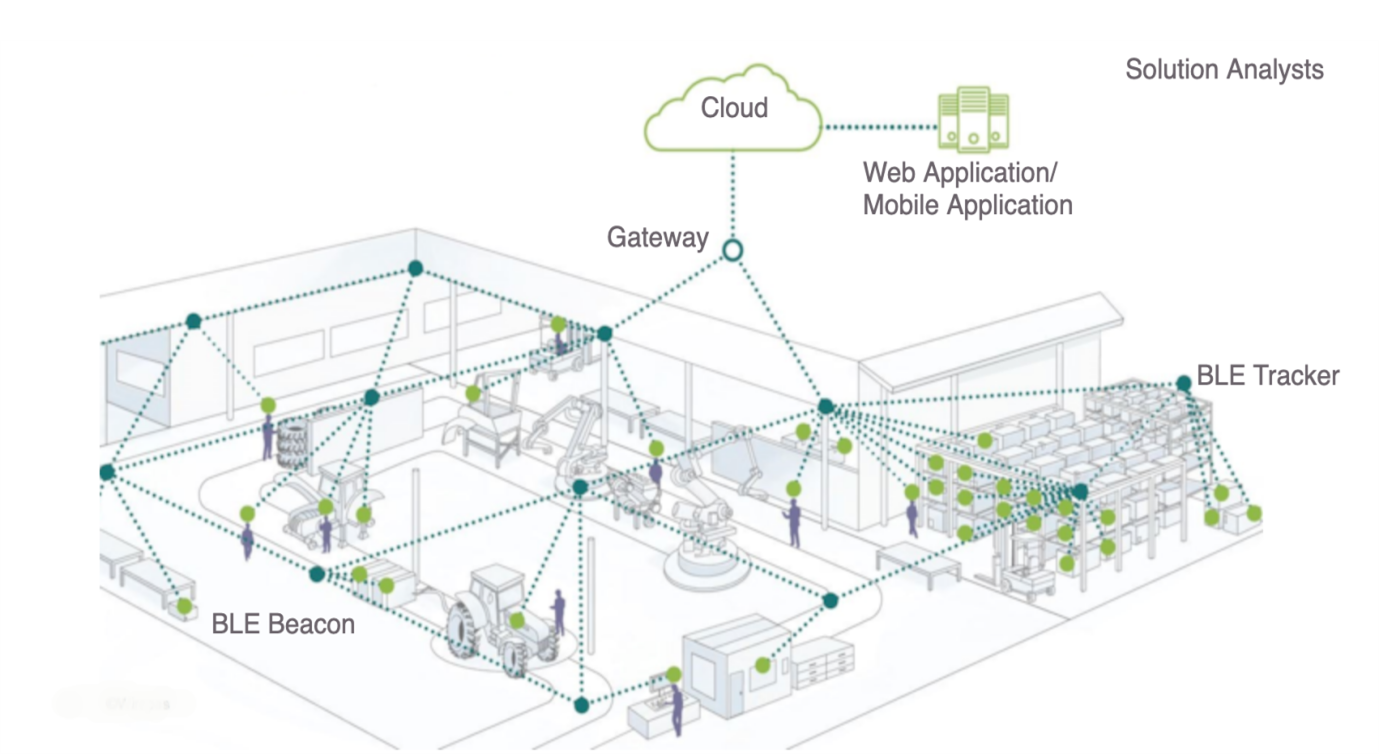
. - Server Architecture:
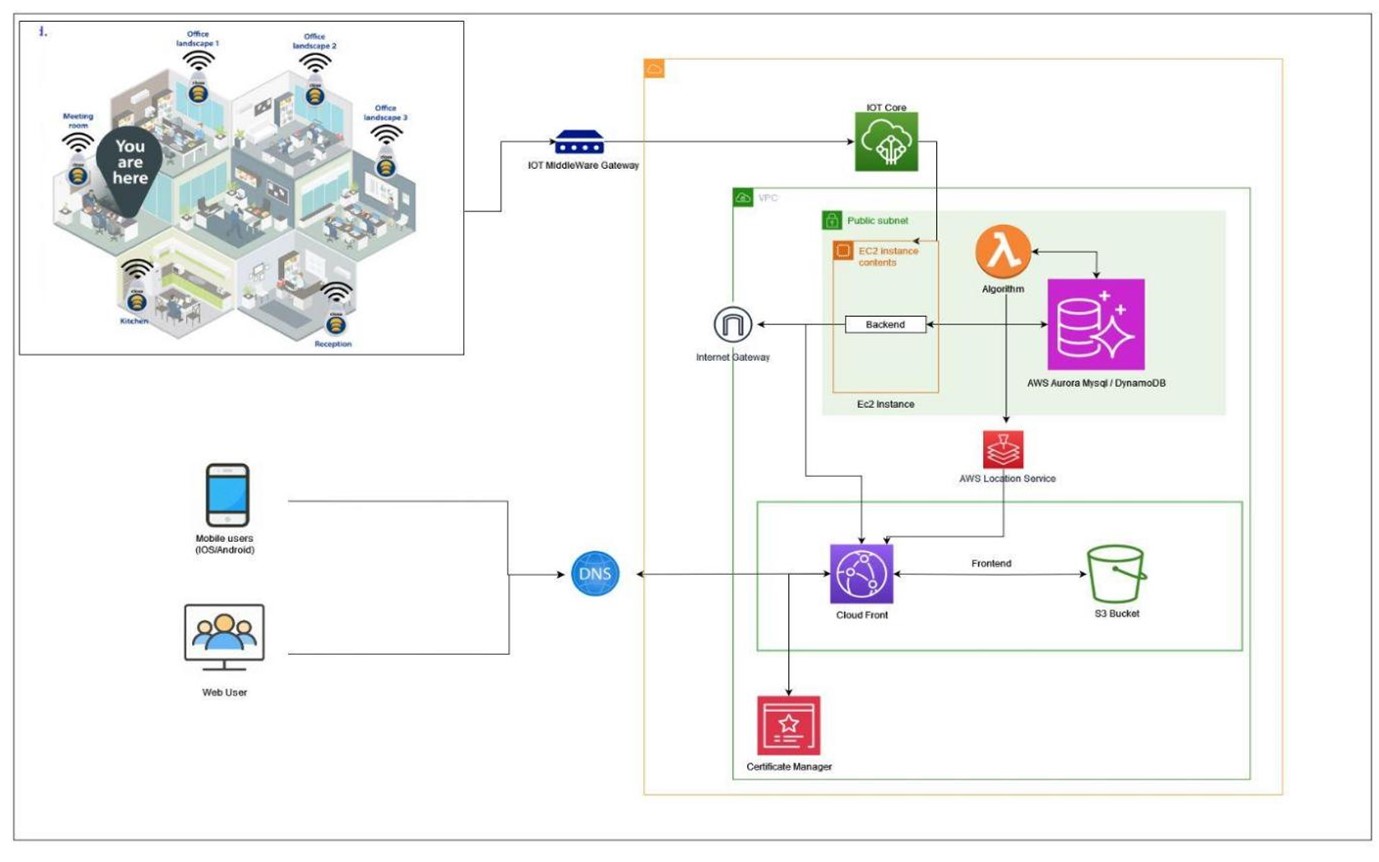
.
Working & deployment:
By strategically deploying Bluetooth beacons/RFID Tags throughout your hospital/ manufacturing units/garages/Mines/Tunnels/Hostile-remote places, we create a comprehensive network that is closely monitored from a centralized control station or security center and gives a clear image of where assets are throughout the premises.
Our innovative iBeacon/RFID technology is seamlessly integrated into your assets, leveraging the existing Bluetooth beacons/RFID Tags strategically positioned around your facility. This enables your assets to communicate their whereabouts efficiently &consistently.
In the example of a tooling manufacturing factory, where tools are often being moved around within the factory premises, managers can see the real-time location of tools on their handheld devices by binding RTLS tags to the tools. Even after a tool is unbound, the system will still maintain a record of its last location, preventing the possibility of tool loss.
For tools that have to be taken out of the factory, an anchor installed in the truck can also provide real-time location through GPS signals. Comprehensive tracking enables more efficient allocation of tools, which leads to an effective increase in production capacity.
RTLS optimize the personnel management, asset management, and production line management.
Asset Tags:
BLE Beacons:
Utilizing Bluetooth Low Energy (BLE) beacons compliant with the latest standards (e.g: Bluetooth 5.0/5.1) for optimal energy efficiency and range. Implementing a custom firmware stack for beacon devices, allowing for fine-tuning of advertising intervals, transmit power, and packet formats. BLE Beacons continually broadcast short data packets & heartbeat packets. Packets consist of SSID , RSSI, Battery level,etc.
BLE + LoRa Trackers:
Developing hybrid trackers that leverage both BLE and LoRa technologies.We can also use Trackers in RFID to track the Active & passive RFID Transmitter. Designing low-power consumption algorithms to extend battery life, utilizing LoRa for periodic long-range updates while relying on BLE for more frequent short-range communication. These trackers continuously scan the packets & forward it to the gateway.
LoRaWAN Gateway:
Employing LoRaWAN technology for long-range, low-power communication between asset tags and the central gateway. Integration with a LoRaWAN network server to manage communication sessions and ensure reliable data transmission.
RFID Tags & Readers:
RFID asset tracking involves the use of RFID readers and tags to monitor the movement of business assets like stock, equipment, and inventory. It streamlines the data collection process, providing accurate updates in real-time to the asset tracking system. Additionally, there are applications where RFID tags incorporate GPS for asset visibility and inventory control, sending data such as time, location, and vehicle details to a cloud platform.
The reader emits radio waves through one or more antennas, and the RFID tag, a small device, responds by sending signals back to the reader. This technology is widely used for tracking and identifying various objects, animals, and people by utilizing radio frequencies for data transfer
Backend Infrastructure:
Cloud-based Server:
Selecting a scalable cloud platform such as AWS, Azure, or Google Cloud to host the backend infrastructure.Implementing serverless computing for optimal resource utilization and cost efficiency.
Database Management:
Utilizing a NoSQL database (e.g., Dynamodb, MongoDB) for flexible and scalable storage of asset location data. Implementing geospatial indexing for efficient querying and retrieval of location-based data.We can also use sequelize databases like Aurora Mysql database that implement master slave approach to reduce latency.
III. Tracking Techniques:
Trilateration:
Signal Strength Analysis:
Employing advanced signal processing algorithms to analyse the received signal strength indicator (RSSI) from BLE beacons.Using machine learning models to continuously calibrate and improve the accuracy of trilateration.Python languages leverage the machine learning algorithms to get more accurate distance using aggregating & approximating RSSI signals.

Angle and Distance Measurements:
Implementing algorithms (Circle Expansion-Based Adaptive Trilateration, Range error correction, Advanced optimization algorithms, Localisation errors, Fingerprint methods, Triangulation to get precise accuracy, etc.) that calculate asset positions based on the angle and distance measurements obtained from BLE + LoRa trackers. We can also utilize sensor fusion techniques to combine data from accelerometers, gyroscopes, and magnetometers for enhanced accuracy.
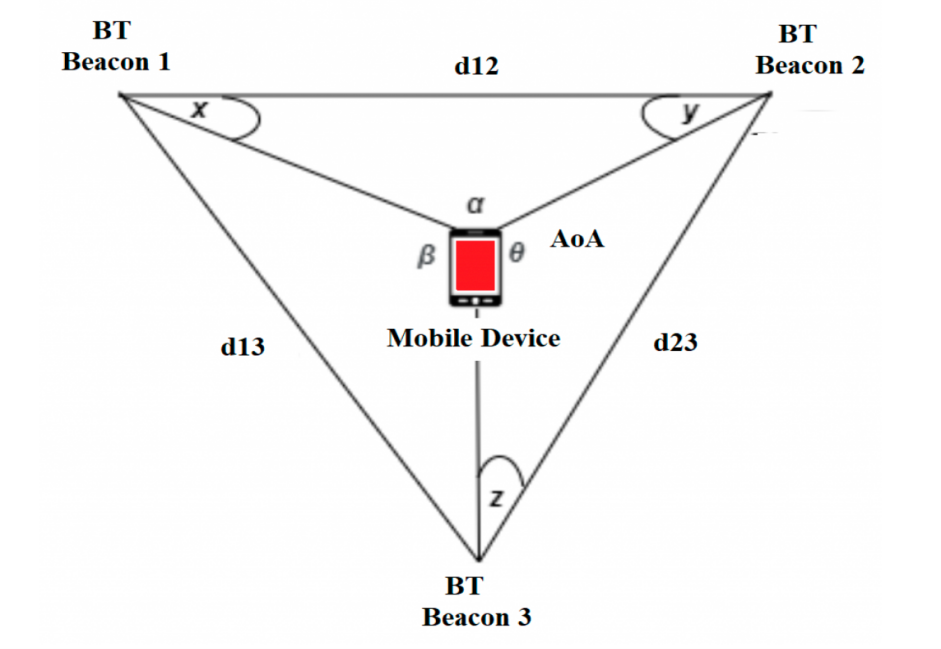
End-to-End Encryption:
Transport Layer Security (TLS):
Implementing TLS/SSL protocols to ensure secure communication between asset tags and the central server.Regularly updating encryption algorithms to comply with the latest security standards.
Access Control:
OAuth 2.0:
Implementing OAuth 2.0 for secure and granular access control to the web application and APIs. Regularly auditing and updating access permissions to mitigate security risks.
V. User Interface:
Web Application:
Frontend Technologies:
Developing the web application using modern frontend frameworks such as React or Angular for a responsive and interactive user interface.Javascript/Typescript , HTML,CSS used to design interactive User Interface. Implementing real-time data updates using technologies like WebSockets for a seamless user experience.
Backend Technologies:
Using Node.js for the backend server to handle data processing and communication with the database.RESTful API architecture for seamless integration with the frontend and external systems. We also use Lambda functionality to implement various tri lateral & triangulation algorithms to get asset location data more accurately.
VI. Scalability and Reliability:
Scalability:
Microservices Architecture:
Designing the system as a set of microservices to enable independent scaling of different components.Utilizing containerization (e.g., Docker) and orchestration (e.g., Kubernetes) for efficient deployment and scaling.
Redundancy:
Load Balancing:
Implementing load balancing mechanisms to distribute incoming requests evenly across multiple servers.
Setting up failover mechanisms to redirect traffic in case of server failures.
VII. Integration Capabilities:
APIs and Third-Party Integration:
RESTful APIs:
Designing RESTful APIs for seamless integration with third-party applications and IoT platforms.Documenting APIs using tools like Swagger or OpenAPI for ease of use and developer collaboration.
MQTT Integration:
Supporting MQTT (Message Queuing Telemetry Transport) for efficient and lightweight communication with IoT devices and applications.
VIII. Testing and Quality Assurance:
Comprehensive Testing:
Automated Testing : Implementing automated testing suites for unit testing, integration testing, and end-to-end testing.Utilizing tools like Jest, Mocha, and Selenium for thorough test coverage.
IX. Key benefits of asset tracking:
➢ Equipment Check in/Check out: Streamline the process of managing hospital equipment by accurately tracking its usage and availability.
➢ Increased Productivity. Optimize workflows by minimising time wasted on searching for assets.
➢ Enables Asset Recovery & GPS Positioning: Quickly locate lost or misplaced assets using GPS technology.
➢ Extending Life of Assets: By actively monitoring asset usage and maintenance schedules, our system helps prolong the life of your assets, reducing replacement costs.
➢ Reduced Maintenance Expenses: Effectively plan and schedule maintenance tasks, minimising unexpected expenses.
➢ Streamlining Audit & Daily Operations: Simplify the auditing process and daily operations by leveraging accurate asset tracking data.
➢ Scheduling & Tracking Asset Maintenance: Effectively manage and track asset maintenance schedules to prevent downtime and optimize operational efficiency.
➢ Improvement in Overall Efficiency: It effectively monitors each & every asset indoor & outdoor , which in turn leads to improving the efficiency of each asset.
X. Conclusion:
In conclusion, our technical approach involves a meticulous selection of cutting-edge technologies, robust algorithms, and secure protocols to deliver a state-of-the-art indoor asset tracking system. We are confident that our technical prowess, combined with a commitment to quality and security, positions us as the ideal partner for your asset tracking needs.
